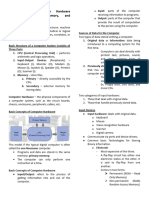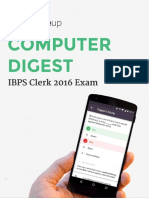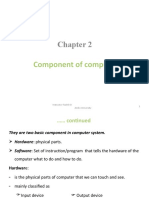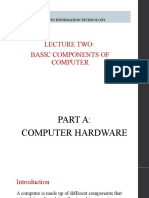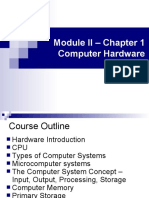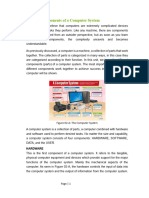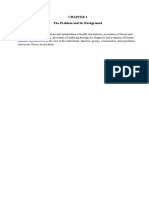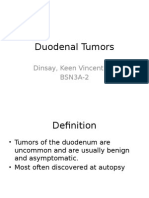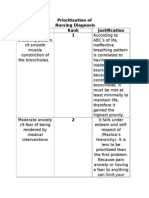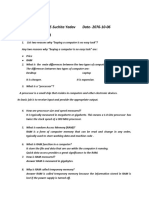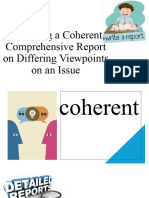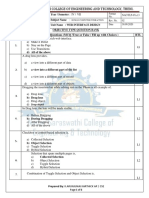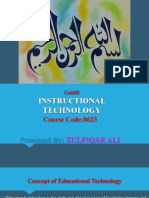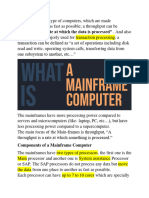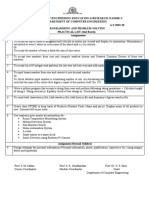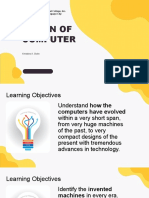Co
mp
uter
Har
dw
are
U
N
I
T
II
OBJECTIVES:
At the end of the lecture the students will be able
to:
1. Gain Basic knowledge of Computer Hardware
2. Familiarize with the different computer input
and output devices
3. Operate basic computer hardware
4. Appreciate the advancement of the kinds of
computer
COMPUTER HARDWARE
Refers to the physical equipment of the computer
system and other peripheral devices attached to
the computer for input, output and storage
purposes
HARDWARE COMPONENTS
1.
Communication Devices
Translate one form of communication from an
internal or external device into which the
computer can understand, then sends it to an
output device or to another computer
HARDWARE COMPONENTS
2. Input devices
Or tools are used for entering data into the
computer such as barcode scanners and touch
screens
HARDWARE COMPONENTS
3. Output Devices Are peripheral devices that convert machinereadable information into people readable form
such as monitor, printer, plotter and voice output
device
HARDWARE COMPONENTS
4. Secondary Storage
Also called auxillary storage
Used to store data and programs when they are
not being processed
More permanent than main memory as data and
programs are retained when the power is turned
off
HARDWARE COMPONENTS
5. Processing Devices
Are included in the system unit where computer
program instructions are executed and data are
manipulated
CPU
It includes the
central
processing
unit (CPU),
main memory,
motherboard
and disk
drives
The CPU
contains the
control unit,
the arithmetic
and logic unit
(ALU)
HARDWARE COMPONENTS
5. Processing Devices
5.1 The Control Unit- is the part of the CPU or
other device that directs the operation and
controls the activity of the entire computer
system
5.2 ALU- Arithmetic Logic Unit- is a part of the
computer that carries out arithmetic and logic
operations by computer instruction
HARDWARE COMPONENTS
5.2 ALU- Arithmetic Logic Unit In some processors it is divided into 2 units an
arithmetic unit (AU) and a Logic Unit (LU)
Some processors contain more than 1 AU, one for
fixed point operations and another for floating
point operations
HARDWARE COMPONENTS
5.3 The ALU includes a group of registers that are
high-speed memory locations built directly into
the CPU used to hold data that are being
processed
HARDWARE COMPONENTS
5.3 Cache Memory
Is a special type of internal memory used by CPU
to increase performance or throuhput
PROCESSING CHARACTERISTICS
AND FUNCTIONS
1. Machine cycle Time or access time is the time
when the CPU executes an instruction measured
in nanoseconds
PROCESSING CHARACTERISTICS
AND FUNCTIONS
2. Clock speed- refers to the number of electronic
pulses the CPU produces at a predetermined
rate, which affects the machine cycle time
PROCESSING CHARACTERISTICS
AND FUNCTIONS
3. Word Length- is simply a fixed-sized group of
bits that are handled together by the machine. It
is usually has a word size of 16, 32 or 64 bits
MEMORY
1. Main Memory
Contains the programs that are currently being
run and the data the programs are opening on
MEMORY
A. Random Access Memory (RAM)
Has 2 memory devices, static RAM (SRAM) or
dynamic RAM (DRAM)
SRAM retains its contents while power is on but
unleashed when off
DRAM has an extremely short data lifetime like
four milliseconds even when power is applied
constantly
MEMORY
B. Read-only memory (ROM)
Has the ability to retain data and programs even
during power failure and it provides permanent
storage for instructions such as programs the
computer manufacturer embedded
MEMORY
2. Programmable ROM (PROM)
Is purchased in an unprogrammed state. The
process of writing your data in the PROM
involves a special place of equipment called a
device programmer
MEMORY
3. Erasable and Programmable ROM (EPROM)
Is programmed exactly like PROM however it can
be erased and reprogrammed repeatedly
MEMORY
4. Hybrid Memories
Can be read and written like a RAM, but
maintain its contents without electrical power
like ROM
MEMORY
5. Electrically erasable and programmable ROM
(EEPROM) are similar to EPROMs but the erase
operation is accomplished electrically rather than
by exposure to ultraviolet rays
MEMORY
6. Flash Memory
Devices are high density, low cost, nonvolatile,
fast (to read but not to write) and electrically reprogrammable
MEMORY
7. Non-volatile RAM (NVRAM)
Is like an SRAM with a battery backup. NVRAM
operates when the power is turned on, just like
any other SRAM
When turned on the NVRAM draw enough power
from the battery to retain its data
SECONDARY STORAGE DEVICE
1. Magnetic Tapes
Are magnetically coated strip of plastic on which
data can be encoded
SECONDARY STORAGE DEVICE
2. Magnetic Disk
Is a round plate on which the data can be
encoded
2.1 Floppy Disk- is a soft magnetic disk that flops,
slower to access than hard disks and have less
storage capacity ( 1.2 MB- 1.4MB)
2.2 Hard Disk- can store from 10 to more than 100
gigabytes, it consists of several platters
SECONDARY STORAGE DEVICE
2.2 Hard Disk- all the read and write heads are
attached to a single access arm so that they
cannot move independently
2.3 Removable Cartridges- are hard disks encased
in a metal or plastic cartridge that are removable
like floppy disks, as capacious and as fast as hard
disks and have the portability of floppy disks
SECONDARY STORAGE DEVICE
3. Optical Disk- records data by burning
microscopic holes on the surface of the disk with
a laser. To read the disk, another laser beam
shines on the disk and detects the holes by
changes in the reflection pattern. It can store up
to 6 gigabytes
SECONDARY STORAGE DEVICE
3. Optical Disk
3.1 Compact disc-read-only memory (CD-ROM)- is
an optical disk capable of storing information up
to 1 gigabyte, ideall for storing information that
requires large storage capacity and for software
applications that support color, graphics, sound
and especially video
SECONDARY STORAGE DEVICE
3.2 CD-Rewritable (CD-RW)- is a type of compact
disk that enables you to write onto it in multiple
sessions. It can read CD-ROMS but it cannot
write a normal CD-ROMs
3.3 Digital Versatile disk (DVD) or Digital Video- is
a type of optical disk technology to the CD-ROM,
it holds a minimum of 4.7 GB of data enough for
a full length movie
SECONDARY STORAGE DEVICE
4. Redundant Array of Independent/ Inexpensive
Disks (RAID)-is a storage system that links any
number of disk drives (disk array) so they act as
a single disk for better performance and
redundancy
SECONDARY STORAGE DEVICE
5. Storage Area Network (SAN)- is a high speed
sub-network of shared storage devices that makes
all storage devices available to all servers on a
LAN or WAN
SECONDARY STORAGE DEVICE
6. Memory Card or Flash Memory Card- is a solidstate electronic flash memory data storage device
used with digital cameras, handheld and laptop
computers, telephones, music players, video
games, consoles and other electronics
SECONDARY STORAGE DEVICE
7. Memory Stick- is a propriety standard invented
by Sony that uses a serial interface data between
the host device and card
SECONDARY STORAGE DEVICE
8. Universal serial Bus (USB) flash drives- are
typically small lightweight, removable and
rewritable with a memory capacity ranges from
megabytes to gigabytes
SECONDARY STORAGE DEVICE
9. Multimedia Card- (MMC)- is used as storage
media for a portable device and can easily be
removed by access by a PC. A digital camera uses
a MMC, with an MMC reader, a user could copy
the pictures taken with digital camera off to his
computer
SECONDARY STORAGE DEVICE
10. Secure Digital Card (SD card)- is a flash
memory, non-volatile memory card format used
in portable devices like digital cameras and
handheld computers.
INPUT DEVICES
Personal Computer Input Devices
1.1 Keyboard- is a peripheral input device modeled
after the typewriter keyboard, for input of text
and characters and also to control the
operations of a computer
1.
INPUT DEVICES
1.2 Mouse- is a device that controls the movement
of the cursor or pointer on a display screen
1.2.1 Mechanical Mouse- has rubber metal ball on
its underside that can roll in all directions
1.2.2 Optical Mouse- uses a laser to detect the
mouses movement
1.2.3 Serial Mouse- connect directly to an RS-232C
serial port or a PS/2 port
INPUT DEVICES
1.2.4 USB Mouse- connects through a USB port
1.2.5 Cordless Mouse- is not physically connected at
all, instead it relies on infrared or radio waves to
communicate with the computer
INPUT DEVICES
2. Voice Recognition devices- use microphones and
special software to record and convert the sound
of the human voice into digital signals
INPUT DEVICES
3. Terminals- are input devices that perform data
input, A terminal is connected to a complete
computer system including a processor, memory
and a secondary storage
INPUT DEVICES
4. Touch Sensitive screens- function as input and
output devices by touching certain parts of a
sensitive screen.
INPUT DEVICES
5. Bar- code scanners- employ
a laser scanner to read the bar-coded label
INPUT DEVICES
6. Optical data readers- can be used to scan
documents
2 categories:
a. Optical mark recognition (OMR)
b. Optical character recognition (OCR)
INPUT DEVICES
7. Point-of-sale (POS) devices- are terminals used
in retail operations to enter sales information
into the computer system
INPUT DEVICES
9. Automatic Teller machine (ATM) devices is a
special purpose input and output device and
terminal where bank customers perform
withdrawals and other transactions for their
bank accounts
INPUT DEVICES
10, Radio Frequency Identification (RFID)technology employs a microchip called smart tag
with an antenna that broadcasts its unique 96-bit
identifier and location to corresponding receivers
OUTPUT DEVICES
Visual Display Units(VDU) monitors- are used to
visually interface with the computer and are
similar in appearance to TV
OUTPUT DEVICES
Features of Visual Display Unit
1.1 size- usually 14-19 inches
1.2 Resolution- determined how clear and detailed
the image is (pixels)
1.3 refresh rate- how often the picture is redrawn
on the monitor
1.4 Type- determines what resolutions are
available and how many colored can be displayed
OUTPUT DEVICES
Features of Visual Display Unit
1.5 Color- 16 to 256 to 64 thousand to 16.7 million
colors
1.6 Scan Pattern- there are 2 patterns used by
different monitors to cover the whole screen
Non-interfaced and interfaced.
PRINTERS AND PLOTTERS
Printer- puts on paper what you see on your
monitor by printing you create a hard copy
2 Main types of printer
1. Impact printer- which uses a number of metal
pins which strike an inked ribbon placed between
the print head and the paper
2. Non-impact printer- uses ink spray or toner
powder.
PRINTERS AND PLOTTERS
Plotters- are used to produce graphs and diagrams
for buildings and engineering drawings
Two main types:
1. Pen Plotters-have an ink pen attached to draw
the images
2. Electronic Plotters- work similarly to a laser
printer
COMPUTER SYSTEM TYPES
1.
Palmtops or Personal Digital assistant (PDA)
Are highly integrated computers that often use
flash memory instead of a hard drive for
storage
COMPUTER SYSTEM TYPES
2. Laptops or Notebooks- are portable computers
that integrate the display, keyboard, a pointing
device or trackball processor, memory and hard
drive in all battery operated package slightly
larger than an average hardcover book
COMPUTER SYSTEM TYPES
3. Thin client- is a low-cost, centrally managed
computer that is devoid of a DVD player, internal
disk drive and expansion slots
COMPUTER SYSTEM TYPES
4. Workstation- is a part of a computer network and
has more than a regular desktop PC like memory,
storage space and speed
COMPUTER SYSTEM TYPES
5. Server- runs a network computers. It handles the
sharing of equipment like printers and the
communication between computers on the
network
COMPUTER SYSTEM TYPES
6. Mainframe computers- are large and expensive
computers manly used to government institutions
and large companies to bulk data processing such
as censuses, industry consumer statistics, bank
transaction processing
COMPUTER SYSTEM TYPES
Supercomputers- are mostly comprised or multiple,
high performance computers working in parallel
on a single system.
HISTORY OF COMPUTERS









